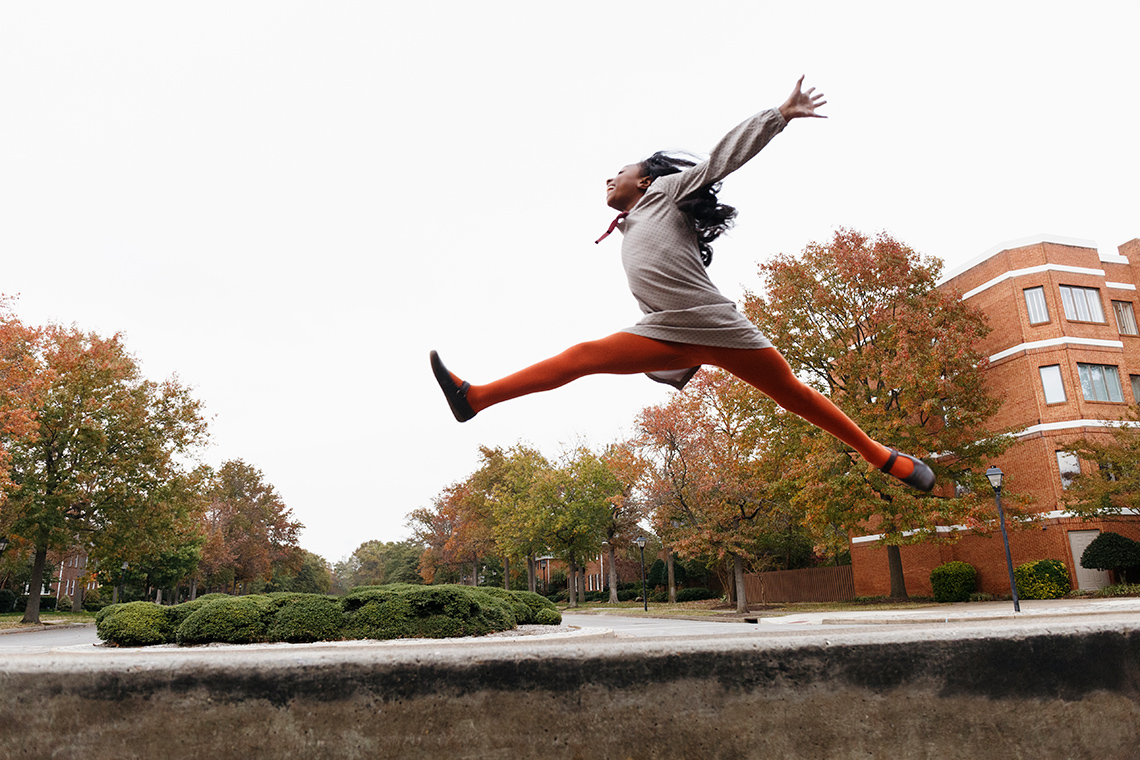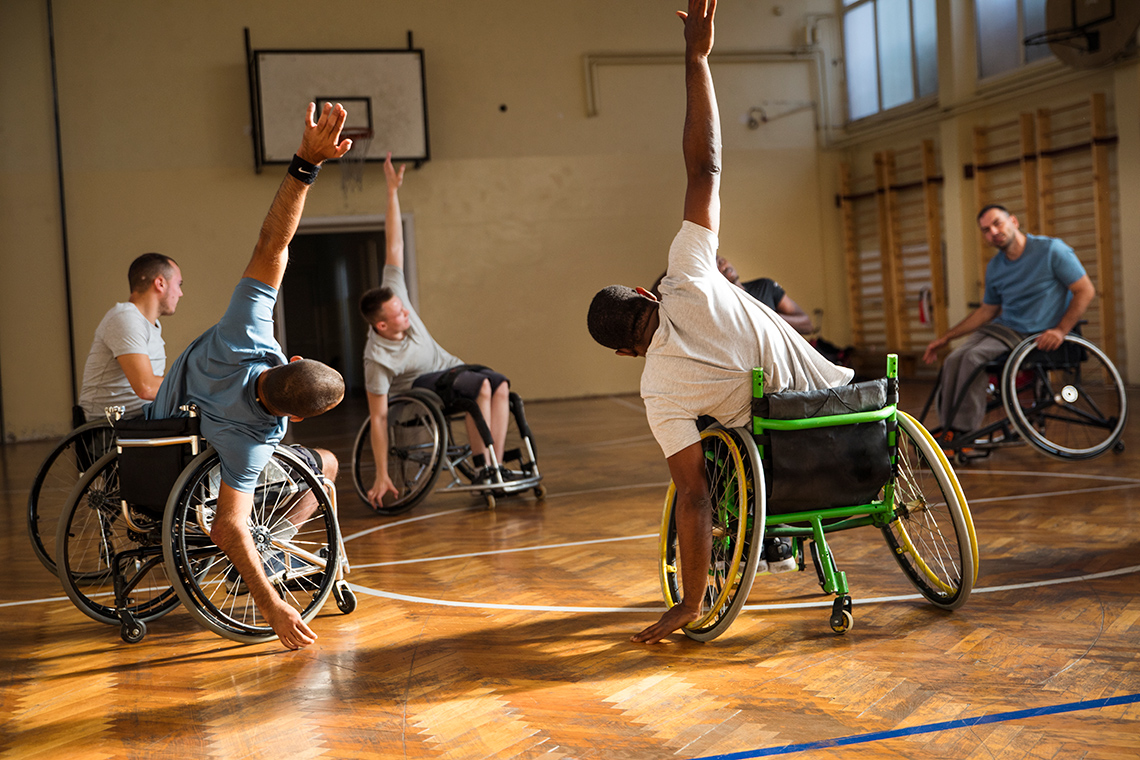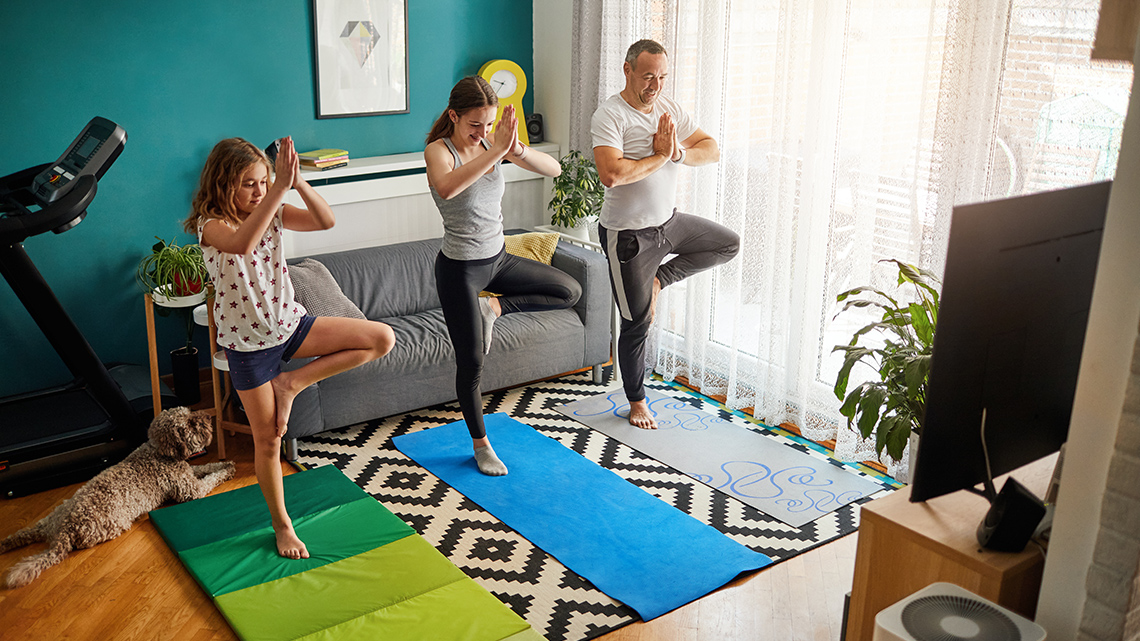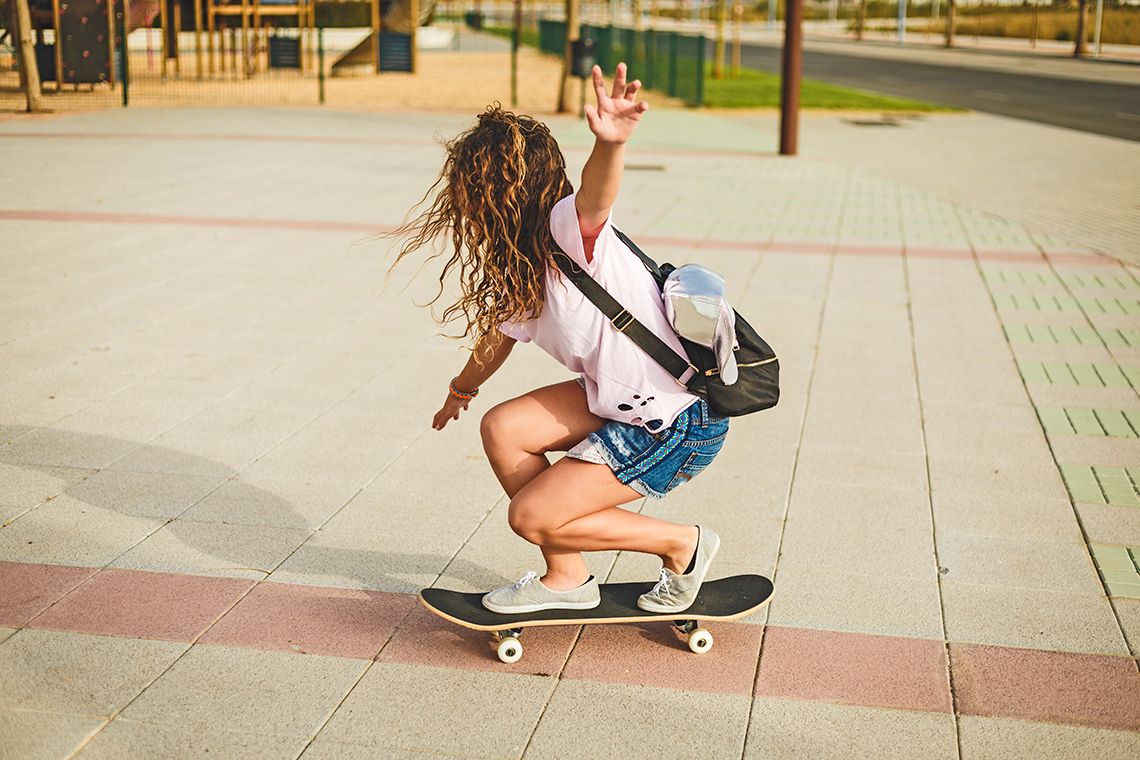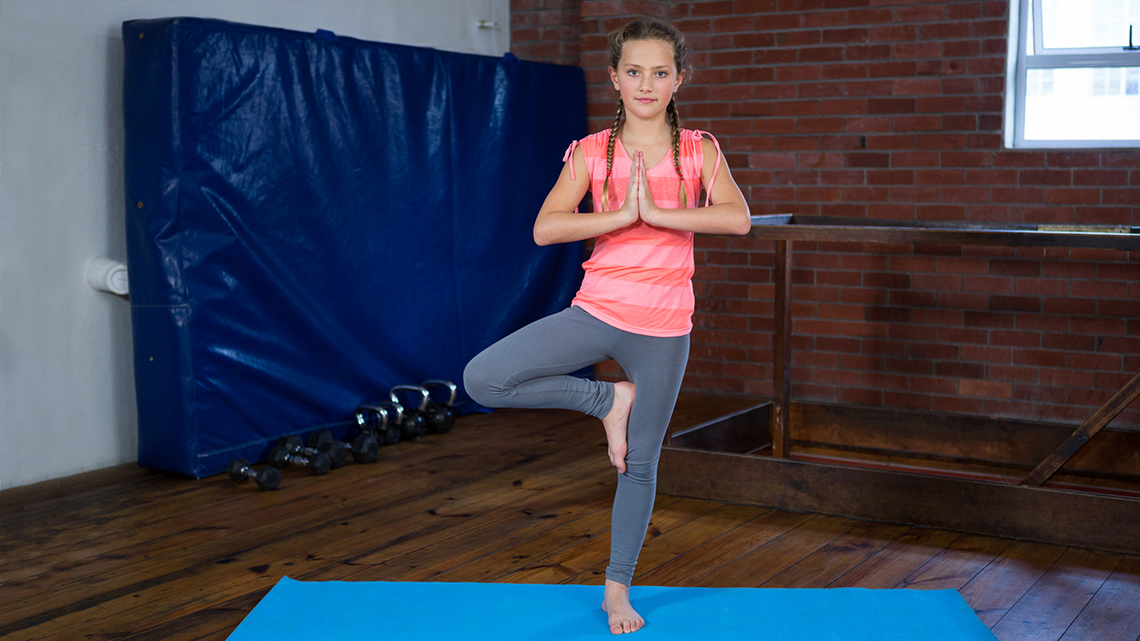Minds On
Different types of balance

There are two main types of balance. Static balance describes the ability to keep your body in one position. Dynamic balance happens when you are able to control your body while it is moving.
Explore the following examples of static and dynamic balance. Consider how each person is moving and how their bodies are positioned.
What did you notice about each image? Can you think of more examples of static and dynamic balance?
Complete the Types of Balance T-Chart in your notebook or using the following fillable and printable document. If you would like, you can use speech-to-text or audio recording tools to record your thoughts.
| Static balance | Dynamic balance |
|---|---|
Press the ‘Activity’ button to access Types of Balance T-Chart.
Improving balance
When have you lost your balance and why? Why might people lose their balance? Reflect on the previous images and create tips to improve maintaining your static and dynamic balance.
Student Tips
Tips for successful balancing
Your tips for improving balance may include:
- keeping eyes and head facing forward
- keeping spine straight, knees, and hips loose
- making small movements to avoid overbalancing
- breathing in and out slowly
- being aware of the environment (e.g., air movement, uneven surface, etc.)
If possible, discuss what tips would work for both types of balance and which ones only apply to static or dynamic.
Questions to consider
- Which type of balance do you believe might be more challenging? Why?
- Which activities require static balance?
- Which activities require dynamic balance?
Action
Static and dynamic balance
Recall that static balance is a stability skill where the body maintains a desired shape in a stationary position.
Static balance activity
Let’s begin by exploring a static balance movement.
Safety
Before you begin, consider these safety precautions:
Warm Up
Warm up
Your body needs to be warmed up before you exercise. You can do this by completing the following stretches and light aerobic exercises, which will help you better perform a movement/activity. This also greatly reduces your chance of injury.
Always warm up before doing any physical activity!
Press the following tabs to access a few examples of warm-up activities that you can try.
If you can, let’s stretch our necks! This stretch can be performed standing up or in a seated position. Keep your shoulders relaxed as you begin with your head facing forwards. Gently and slowly tilt your head to the right. Hold here for five seconds. Begin rolling your head slowly, keeping your chin tucked and head down, to the opposite side. Hold for five seconds. Roll your neck back to the middle, then bring your head up to the starting position. Repeat 3-5 times.

If you can, let’s warm up our shoulders! Either standing or in a seated position, raise and extend your arms to the sides without bending the elbows. If you are standing, have your feet shoulder-width apart. Keep your thumbs pointing in front of you. Begin slowly rotating your arms forward, making small circles. Go forward for 20-30 seconds, then backwards for the same amount of time.

If possible, stand tall and shift your weight to your right leg. Lift your left foot back and hold it with your left hand. Pull the left foot towards your butt and feel the stretch. Hold the stretch for 20 seconds and repeat with the right leg. Repeat the stretch five times for each leg.

Stand or sit upright with your hands to your sides and lift one leg slightly up to make small circles with your ankles. Do this 10 times in each direction and repeat with your other foot.

Stand or sit upright with your hands in front of your chest. Hold one wrist with the other hand and make small circles with the wrist that is being held. Complete this 10 times in each direction and repeat with your other hand.

Begin in a standing position with your legs together and your arms at your sides. Stretch your arms above your head and jump slightly so that your feet are spread wider than shoulder-length. Repeat this movement 10 times.
 Description
Description
A person begins a jumping jack by standing straight with their hands at their sides. They jump so they end with their feet spread apart and their hands touching above their head.
Starting a static balance
This activity can be done by sitting down and moving your legs into position. You can also just move your arms into the outstretch position.
If you will be seated in a chair during this activity, make sure the chair is on a flat, sturdy surface.
Press the following tabs to learn more about how to complete each movement.
Keep your head up and focused on a stationary object for balance. With the back straight, shift your weight slightly to the support leg. Raise your arms to the side for balance. Raise the non-support leg and place your foot on the calf or thigh of the support leg. Your knee should be bent and pointed out to the side. Hold for 10 seconds.

In a seated position, lean your torso forward towards your knees and keep your arms down. The palms should be facing each other. Once you are comfortable, lift both of your arms so that they are straight and parallel to the ground.

Try It
Try it
If possible, practise the single-leg balance on both legs. Hold the top of a chair to help keep your balance.
When attempting the bent over arm lift, hold your stances for as long as possible.
After completing this task, explore and demonstrate your own balance poses. Try a static balance pose that you found and challenge yourself to hold it as long as possible.
Reflection
Answer the following questions after completing the activity:
- What strategies helped me maintain my balance?
- Which balance poses did I attempt?
- Which strategy do I want to keep practising?
Balance ball throw

You will now explore an activity that uses dynamic balance movements.
Press the tabs to access the steps for this activity.
Try It
Try it
This activity can also be modified! Try balancing bean bags or any soft item, such as a rolled-up sock or a crumped piece of paper, on different parts of the body while holding your stances.
Cool Down
Cool down tips
We’ll cool down with a few stretches. Take slow and deep breaths during these stretches as you allow your heart rate to return to a normal pace.
Explore the following images for stretches to try during your cool down.
Pause and Reflect
Pause and reflect
Answer the following questions using a method of your choice:
- How did throwing the ball make balancing more difficult?
- If you lost your balance, what happened?
- Were some balances harder than others? Why?
Consolidation
3-2-1 balance reflection
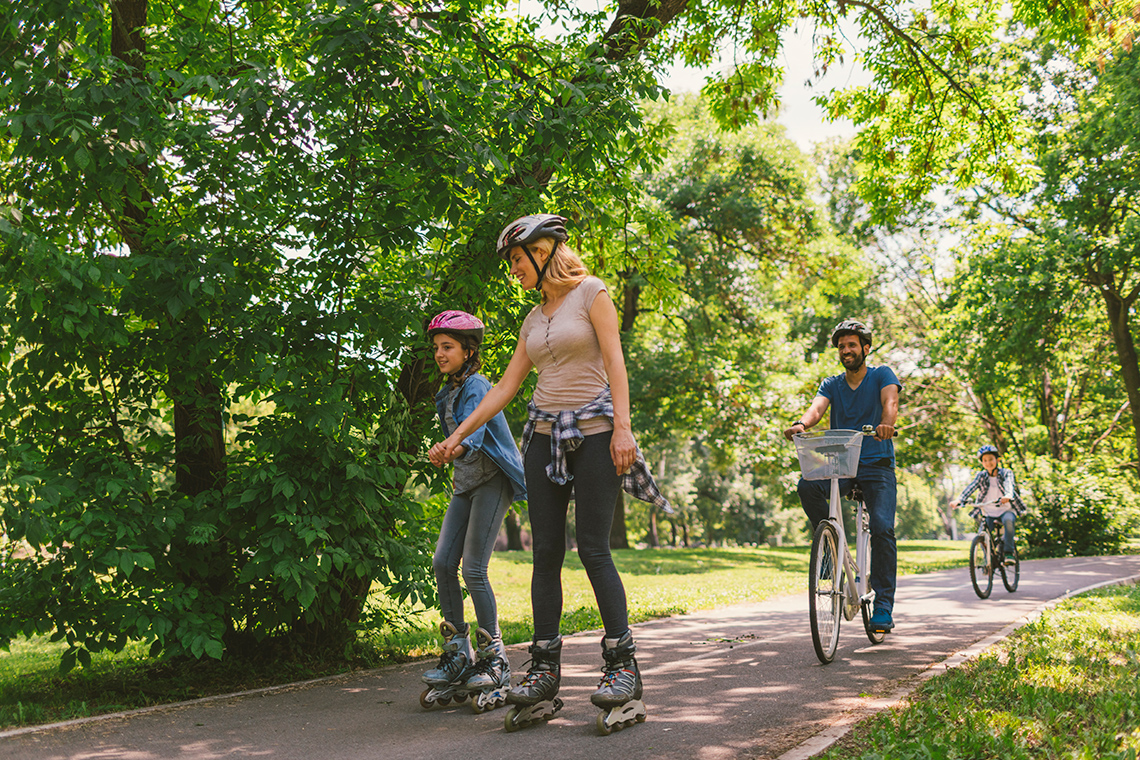
What have we learned about balance?
If possible, share with a partner or reflect independently on three things you learned, two things you have a question about, and one thing you will tell someone about what you have learned.
Complete the 3-2-1 Balance Reflection in your notebook or using the following fillable and printable document. If you would like, you can use speech-to-text or audio recording tools to record your thoughts.
| 3 things I learned… |
|---|
|
1. 2. 3. |
|
2 questions I have… 1. 2. |
|
1 thing I want to share… 1. |
Press the ‘Activity’ button to access 3-2-1 Balance Reflection.
Practise makes perfect
Take some time to perform the movements practised in the Actions section.
If possible, demonstrate these movements to someone. You may also record yourself performing them using a method of your choice.
Pause Reflect
Thinking about balance
- How did you feel about moving your body in different ways and holding the poses? Why?
- What would you like to continue to practise?
- What are some important safety precautions to be considered when balancing in a learning space?
Reflection
As you read through these descriptions, which sentence best describes how you are feeling about your understanding of this learning activity? Press the button that is beside this sentence.
I feel…
Now, record your ideas using a voice recorder, speech-to-text, or writing tool.
